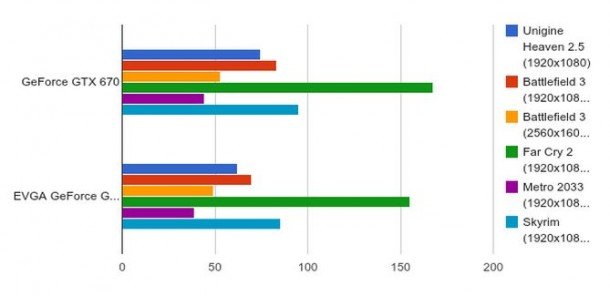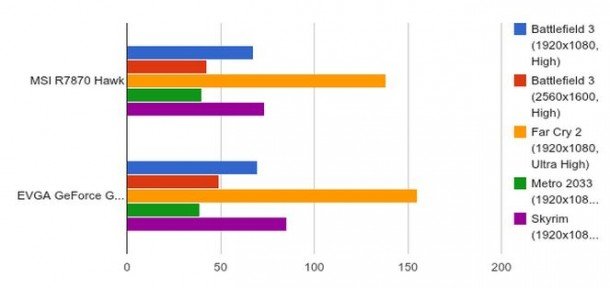Nvidia launches GTX 660Ti, EVGA Superclocked Edition tested
The GTX 660Ti itself is essentially a cut down version of the GTX 670. It uses exactly the same GK104 chip that's in the GTX 670 and 680 with, surprisingly, almost the same specifications as the £350 GTX 670. Both have 1344 stream shaders turned on, a base clockspeed of 915MHz and the ability to turbo boost up to 980MHz on demand. They both very power efficient - NVIDIA quotes a 450W PSU as being plenty for the 660Ti - and can be comprehensively tuned and overclocked in the driver suite.
Where they differ is in the less headline worthy back end of the chip. The 660Ti has just 32 texture units and 16 ROPS , compared to 48 and 24 respectively on the 670. That results in a lower memory bandwidth - a measly 192bits compared to 256bits for the bigger card.
It's a reversal of the strategy NVIDIA used successfully with the GeForce 500 series, where the high end 580/570 was followed by 560s based on a different, cheaper chip. The 580/570s used a chip codenamed GF110, while the 560s used GF114. Only later on did we get the special '448' edition GTX 660s which used up lower quality GF110s rebranded as a premium 'mainstream' product.
Using this methodology, 'true' 660s (and 650s) will only arrive with the as yet unannounced GK106 processor - which is now the one to watch.
In order to test it out, I've been using an EVGA branded GeForce GTX 660Ti 'Superclocked' edition . EVGA has done a good job with the chip: its 660Ti comes dressed in a smart solid box hiding all but the main fan and requires two six pin molex cables for power. It's ridiculously quiet, and the fan never makes a whisper even when under load.
The 'Superclock' moniker means that it's also had an overclock applied at the factory, leaving the chip running at 980MHz by default and boosting up to 1059MHz automatically.
Here's how that overclocked card compares to a GTX 670.
Keep up to date with the most important stories and the best deals, as picked by the PC Gamer team.


It's a strong performance. Never quite catching the GTX 670, but at £50 less definitely worth looking at. The problem is when you look at what other cards can do. Like a £230 MSI HD7870 HAWK, for example.


With an unoverclocked GeForce 660Ti, those figures will be even closer, and of course the card you'll be most interested to see it up against is the Radeon HD7950 - because that's the same price. Sadly, I haven't had chance yet to run that test (not having a HD7950 in the office), but my colleague Dave James has . And he's less impressed than I am.
All of which leads me to the following conclusions about what graphics cards you should be buying right now.
If you're gaming on one monitor, stick with a card which costs under £200/$250 - of which the Radeon HD7850 is currently my favourite.
If you want more power, anything between £200 and £300 ($250 and $350) is going to give you very similar performance figures across the board right now.
And if you want the best there is for multiple screens or bragging rights, an overclocked GeForce GTX 670 is the way to go.
And if you want the TL:DR summation of EVGA's GeForce GTX 660Ti SC - it's a fine performer which moves value for money in the right direction, but it's not the revolution in performance per pound we were hoping for.

